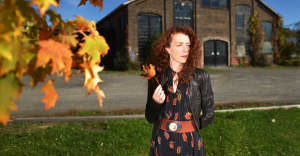Transcending time with the artists of 24-HOUR DRONE
Marathon listening event co-curator Sarah Van Buren breaks down her programming process, and the festival’s featured artists respond to a survey on the meaning and power of drone.
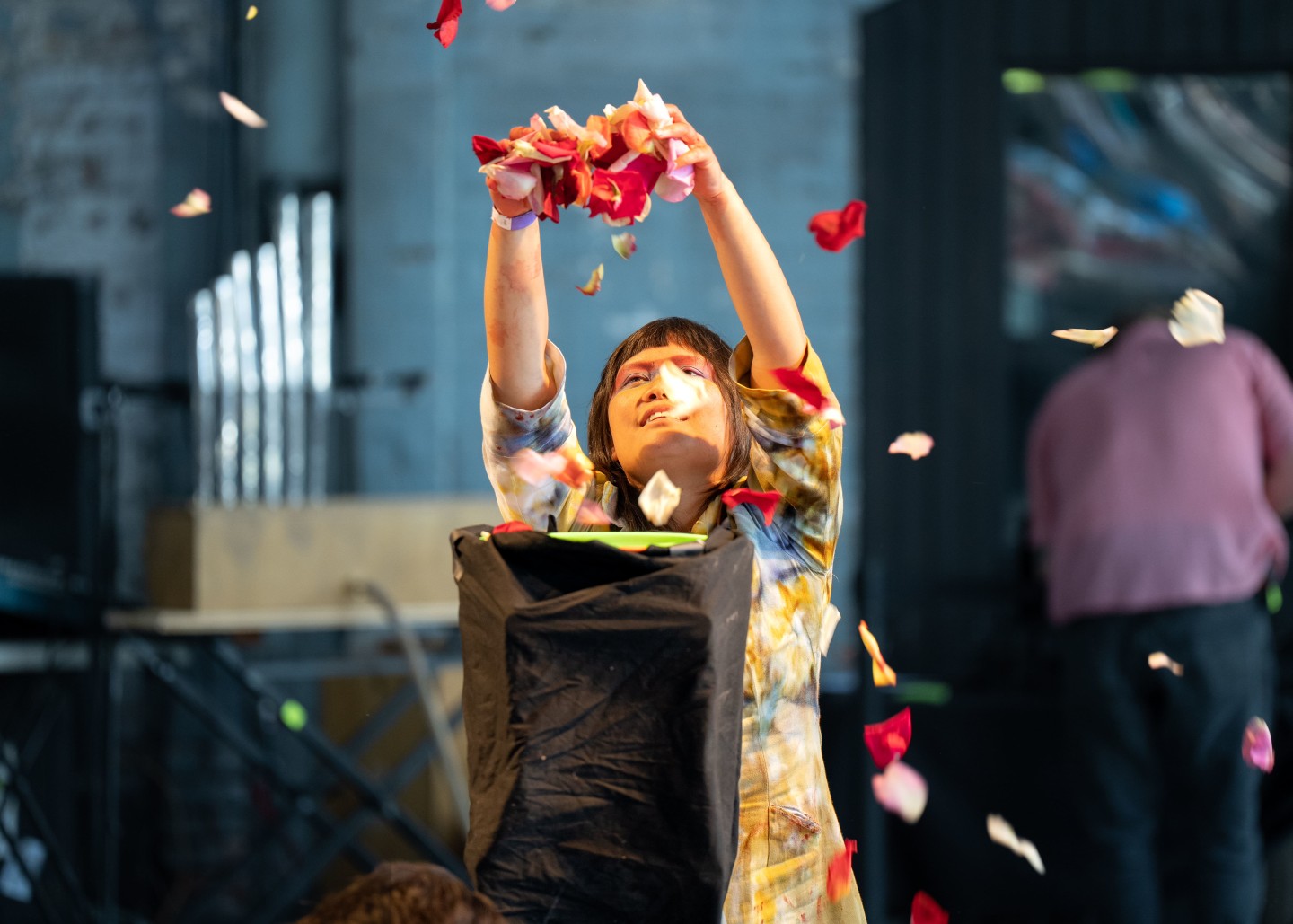 gushes’ Jennae Santos. Photo by Peter Galgani.
gushes’ Jennae Santos. Photo by Peter Galgani.
On Memorial Day weekend, more than two dozen sound artists and hundreds of fans converged on Basilica, a railroad wheel foundry turned creative Mecca in New York’s Hudson Valley. Over the course of 24 hours of unbroken sound, performers and audience experienced a shared musical experience that transcended the terms of a traditional concert.
Before the festival, I caught up with Basilica Hudson’s co-founder, Melissa Auf der Maur, who detailed her personal history of 24-HOUR DRONE. The following week, I spoke to Sarah Van Buren, Auf der Maur’s only full-time employee and DRONE’s long-time co-curator.
“Drone is the sister of the drum beat,” she explained when I asked for her personal definition of the commonly misunderstood term. “It’s the oldest form of sound we have, and it’s one of the earliest forms of music.”
When I talk to most studied music fans about drone, they most readily jump to the sustained-tone minimalism of its early Western proponents (i.e La Monte Young) and those who made it a fashionable component of avant-garde pop and rock (i.e John Cale). Less studied fans make the obvious logical conclusion that I’m talking about the unmanned aircrafts favored by middle-aged hobbyists and war criminals (and they’re not totally off base either!).
For Van Buren, however, it’s supremely important to represent the drone-incorporating musical styles that existed long before the 20th century into DRONE’s curation. “It’s not just in experimental, contemporary forms of music — it’s in a ton of ancient music,” she emphasized. “Look at the bagpipes, or the many different forms of North Indian classical music. It’s important to have that counterpoint, where you see different things unfolding that might be unexpected, because the whole point of 24-HOUR DRONE is that it’s this giant communal sonic ritual. It’s artists passing a baton. There’s movement happening on stage. There’s no silence. There’s points of improvisation between acts with the crew and with the audience.”
DRONE 2023 did indeed feature an impressive range of music, from the knob-twisting most commonly associated with drone to its older, yet less arcane, deployments. Featuring elite Balian Gamelan and Indian raga — as well as imaginative, updated takes on Japanese gagaku, jazz, black metal, indigenous American music, and, of course, plenty of ambient and noise — the success of this year’s DRONE was driven by its inspired programming. Together with Auf der Maur, Van Buren achieved the impossible task of curating a lineup that functioned as both an eclectic tasting menu of sounds and an exquisitely rich one-course meal. Just as they’d intended, each act flowed into the next, with the transitional periods between performances often providing the most exciting mixture of sounds.
“It all has to fit within this larger arc, with the 24 hours being its own musical piece at the end,” Van Buren concluded, referring to the recording of the full event streamed and archived on Wave Farm. “How do the acts fit into that? You can imagine it like a story arc, where the beginning slopes upward and the peak is at midnight, and then it starts to fall down, and it resolves at noon again.”
Before attending 24-HOUR DRONE, I sent a survey with two essential questions to every artist on the bill:
1. Beyond the literal definition of drone, what does it mean to you and why are you drawn to it?
2. Are marathon events like 24-HOUR DRONE the ideal setting for drone in its purest form?
The answers I got back are varied and fascinating — much more so than my broad inquiry warranted — but many of them reach a similar consensus: Drone transcends time. In Van Buren’s words: “If you think about DRONE in the context of glacial time, and of the earth, 24 hours is nothing, but a few minutes… It doesn’t even really exist.”
All nine artists who wrote me back provided gracious, insightful responses better left unedited. Read them below.
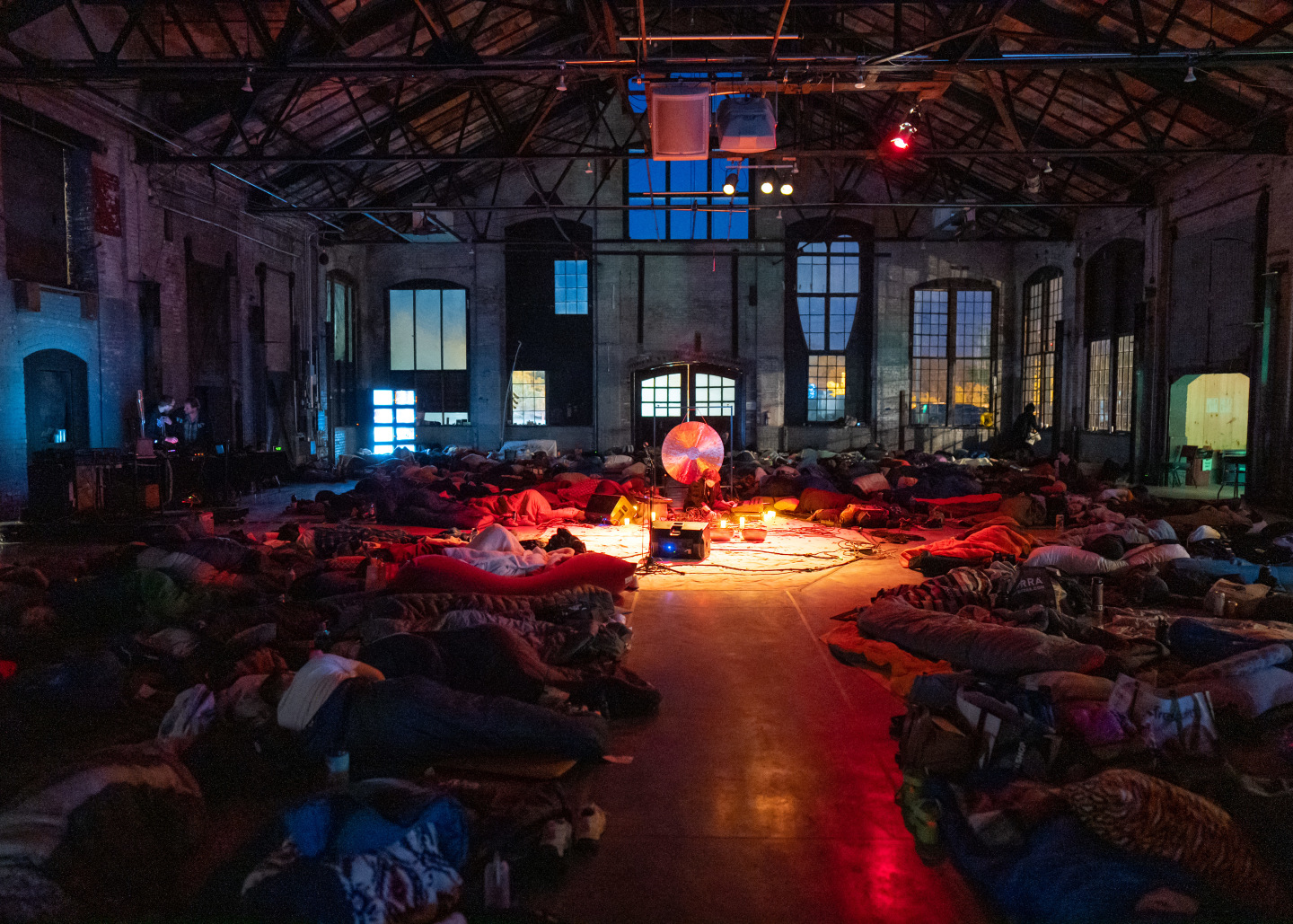 C. Lavender. Photo by Peter Galgani.
C. Lavender. Photo by Peter Galgani.
C. Lavender
With so much of our time dictated moment by moment in our society, immersing ourselves into live sustained music creates a portal to transcend time. In a sonic liminal space we’re able to better access moments of emotional freedom and reflection. As a sound healing practitioner and experimental musician, I’ve explored expansive sonic realms for many years and have experienced first-hand with varied audiences how durational listening can bring about healing, inspiration, and a renewed sense of connectedness to our inner and outer worlds. From a performer’s perspective, I love the sensation of giving musical ideas room to unfold in an unhurried manner; it feels liberating to improvise in the moment not only on where I want to take the music, but where it wants to take me and the audience as well. Getting into that kind of a creative flow is less viable in many typical concert settings.
It’s quite rare for people to be given the unique durational listening opportunity that 24-HOUR DRONE presents. It creates a pathway to come full circle with a collective listening experience, rather than just listening alone at home in bits and pieces, often with distractions. To be able to lie down and close one’s eyes to fully absorb an embodied listening experience is immensely powerful and reminds us that listening goes far beyond just our ears.
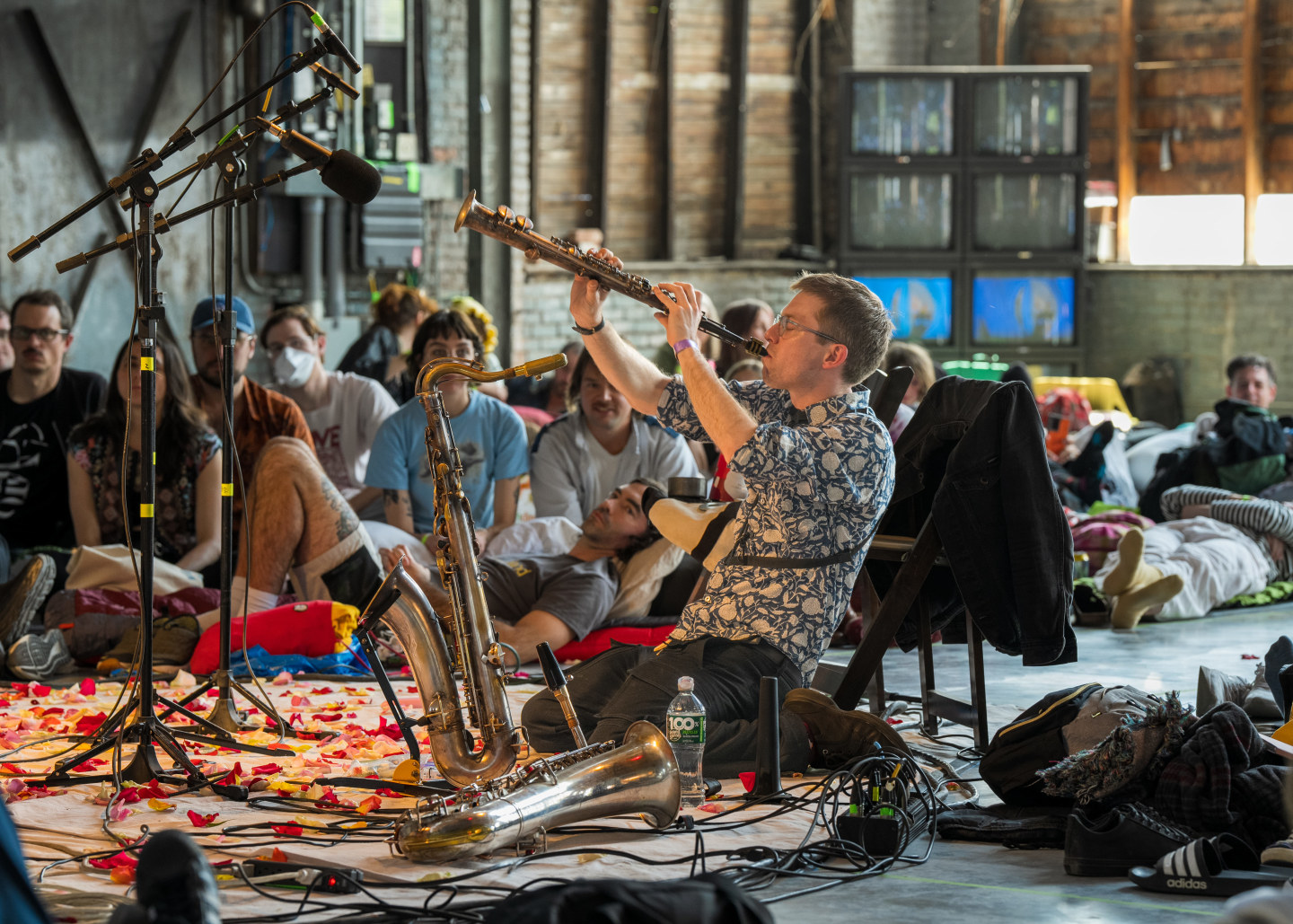 Michael Forster (performing in duo with Luke Stewart). Photo by Peter Galgani.
Michael Forster (performing in duo with Luke Stewart). Photo by Peter Galgani.
Michael Foster
I think of a “drone” as a steady and gradual musical element, one that serves as a harmonic context for not just the progression of the music itself, but also the space in which it is performed. For me, the most fascinating element of a “drone” is how it draws attention to space more so than linear time, and develops in a way that feels more “vertical” rather than “horizontal”, which is almost anathema to how we view music, but more in line with how we view visual forms. When I think of rhythm-based approaches to music, I generally view it as a linear progression, one that develops as gestures are introduced, whereas the drone is more like a blender for sounds, gradually changing the flavor based on introduction and subtraction rather than a piercing of the sonic space.
As someone who needs breathing room between sets of music, I typically prefer to experience music with breaks between to fully digest what I’ve just experienced. However, to have consecutive “drone” performances does present more questions as to the nature of what a “drone” truly is than if it was presented in a more limited setting.
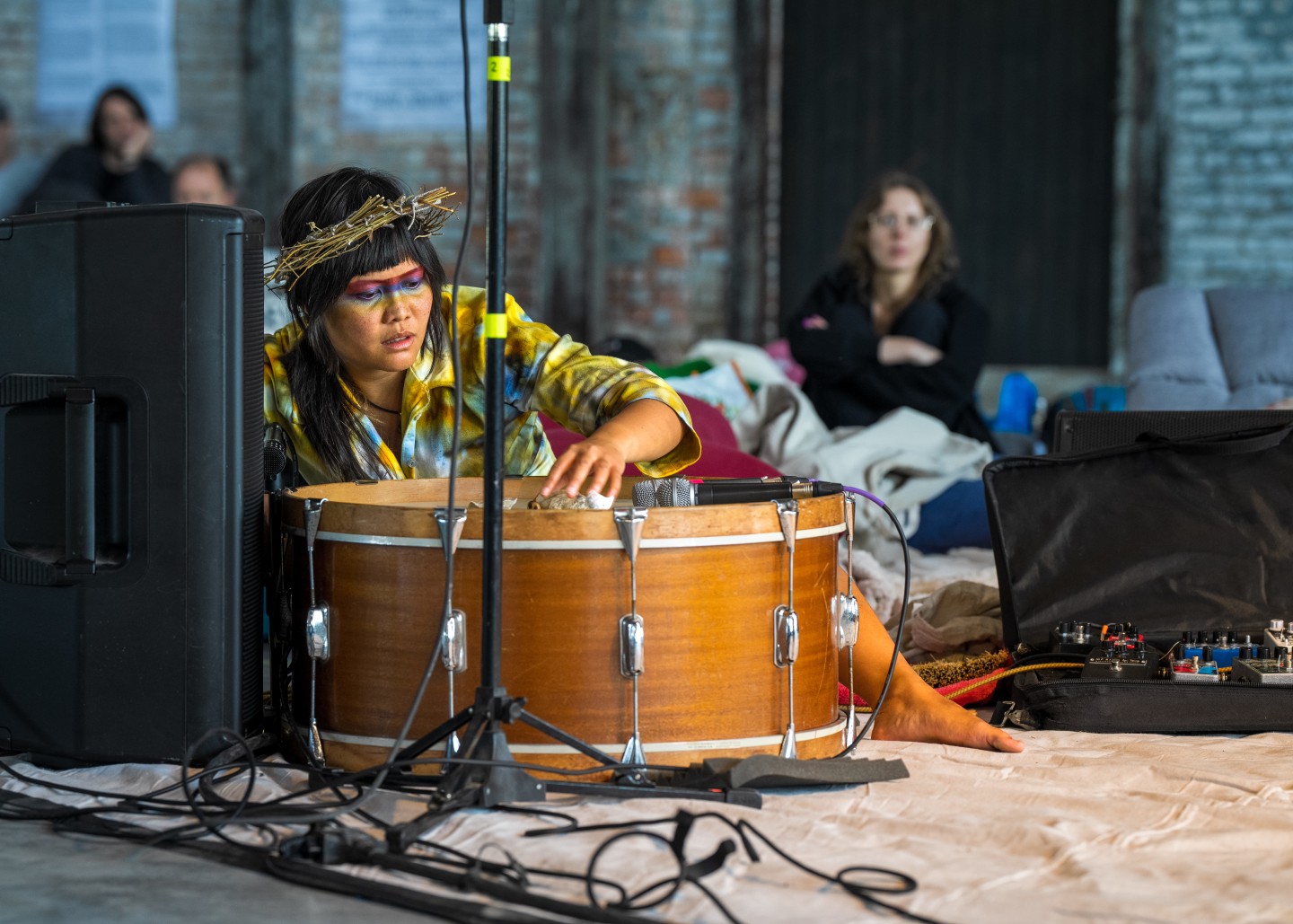 Jennae Santos (performing with Jess Tsang, and Ricky Petraglia as gushes). Photo by Peter Galgani.
Jennae Santos (performing with Jess Tsang, and Ricky Petraglia as gushes). Photo by Peter Galgani.
gushes
Drone reflects the pacing of the earth & cosmos ~ the monumental shifting of tectonic plates, tree growth, fossil records, rain & tidal oscillation carving mountains & coastlines, plant & animal evolution, glacial melt & climate change, the formation of moons, the emblazoned long delay harbinger of star death, rhizomatic contrapuntal weaving, polyrhythms across simultaneous orbital dances of celestial bodies from which emerge seasons.
Drone’s format, space, season, lunar phase & people inspired gushes’ drone score to sound & embody our astronomical & bio-mythological take on the sun, moon & earth triangulation, as represented by 3 bodies playing 3 drums.
We are drawn to Drone because the practice tunes our human perception of productivity time into cosmic creation time.
At the event, there’s a reason so many choose to discard the harsh flickering of their social media feed for more present, holistic & tactile activities. We meditate, draw, knit, snuggle with friends, engage in psychedelic medicine, and beyond all else, listen.
If we move, breathe, play, & listen more like a landscape, melting the factory clock, our hearts could expand in spiritual compassion to the greater story around us, which is animated by nuance and constant transformation. This is what we’re INTO.
The long-form incessant flow & torch-passing nature to drone absolutely supports its purest form! Such grand duration is the perfect portal.
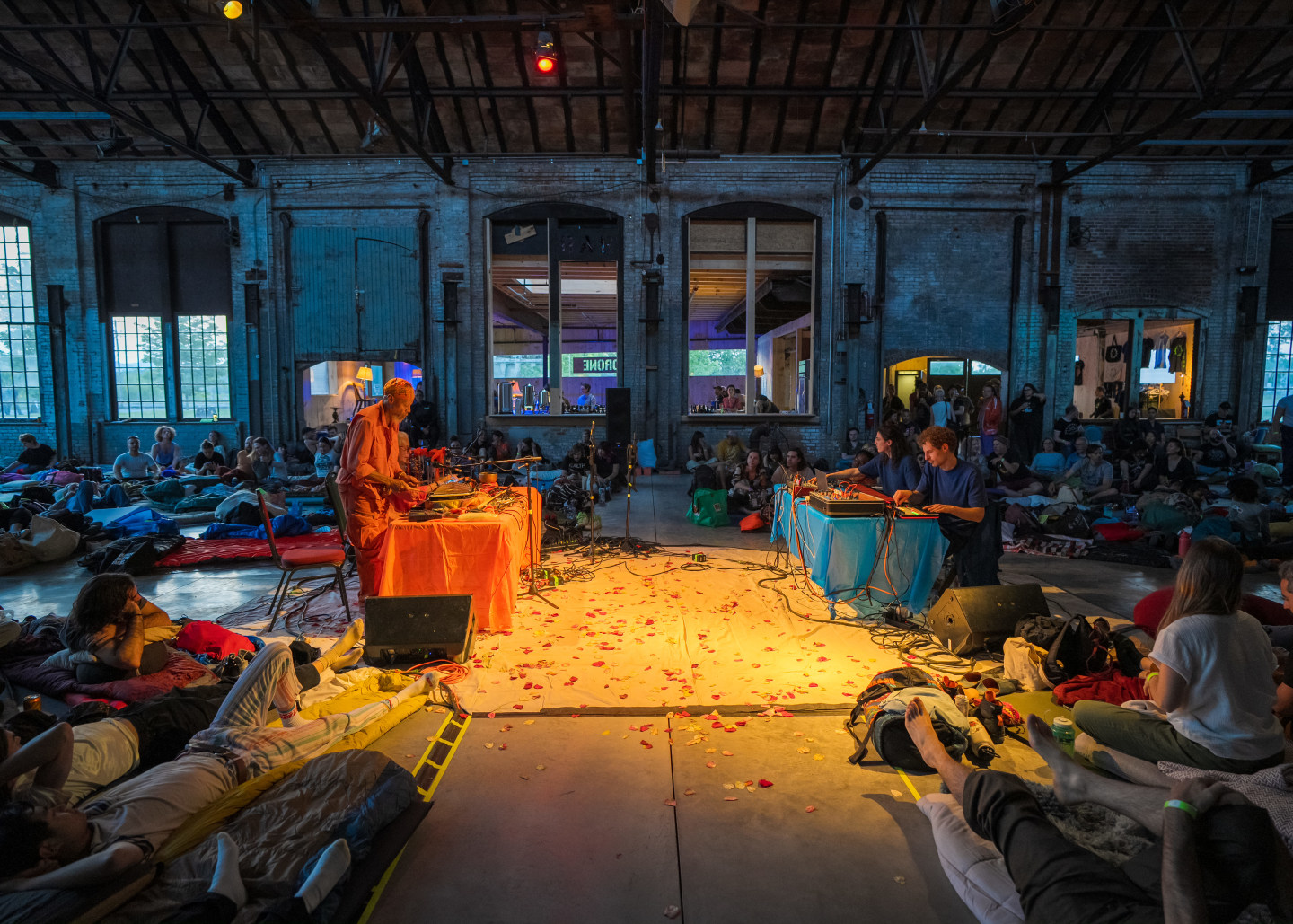 Photay (bottom right) and Celia Hollander (top right) perform with Laraaji (left). Photo by Peter Galgani.
Photay (bottom right) and Celia Hollander (top right) perform with Laraaji (left). Photo by Peter Galgani.
Photay
For me, the Drone represents eternity. It’s an accessible eternity that we, as ephemeral beings, can actually comprehend and interact with. I’m drawn to the drone’s duality of simplicity and complexity. Our state of mind, quality of presence, duration of listening, and decibel level affect our perception of it.
Marathon events like 24-HOUR DRONE are a gateway into listening deeply and differently. It’s the combination of listening with others in community and long durational sound that brings about a new sensation: a heightened presence and awareness that has left me beaming!
Celia Hollander
Drones have no beginning or end. Drone music yields expanded ways of experiencing time in both the musician and the listener: cyclical, spiraling time, presence, trance states, kaleidoscoping expansion and contraction of awareness. As an electronic musician, to play drone is to listen deeply: it’s an unfurling of attention, receptivity and responsiveness, letting chords build, thin out or evolve.
If we could SEE the drone music of this event, it would look like a steady, continuous wake of three-dimensional spherical ripples spreading outwards, reflecting off hard surfaces, getting absorbed into blankets, transmitting through walls and creating glorious interference patterns in the air. To experience this over an epic 24-hour duration with a large group listening together magnifies the physical sensations of sound, expands a collective experience of time, and grounds the whole event in the realm of ritual.
Anneice Cousin
This was my first year participating in DRONE and a real stretch from my typical genre, hip-hop. The challenge and opportunity to experiment with sounding without words in a public performance was what intrigued me.
I had the honor of performing in the final hour and seeing people’s reactions — satisfaction, fulfillment, tears, pure gratitude, genuine connection among the crowd. This has to be the purest experience of any festival I’ve seen.
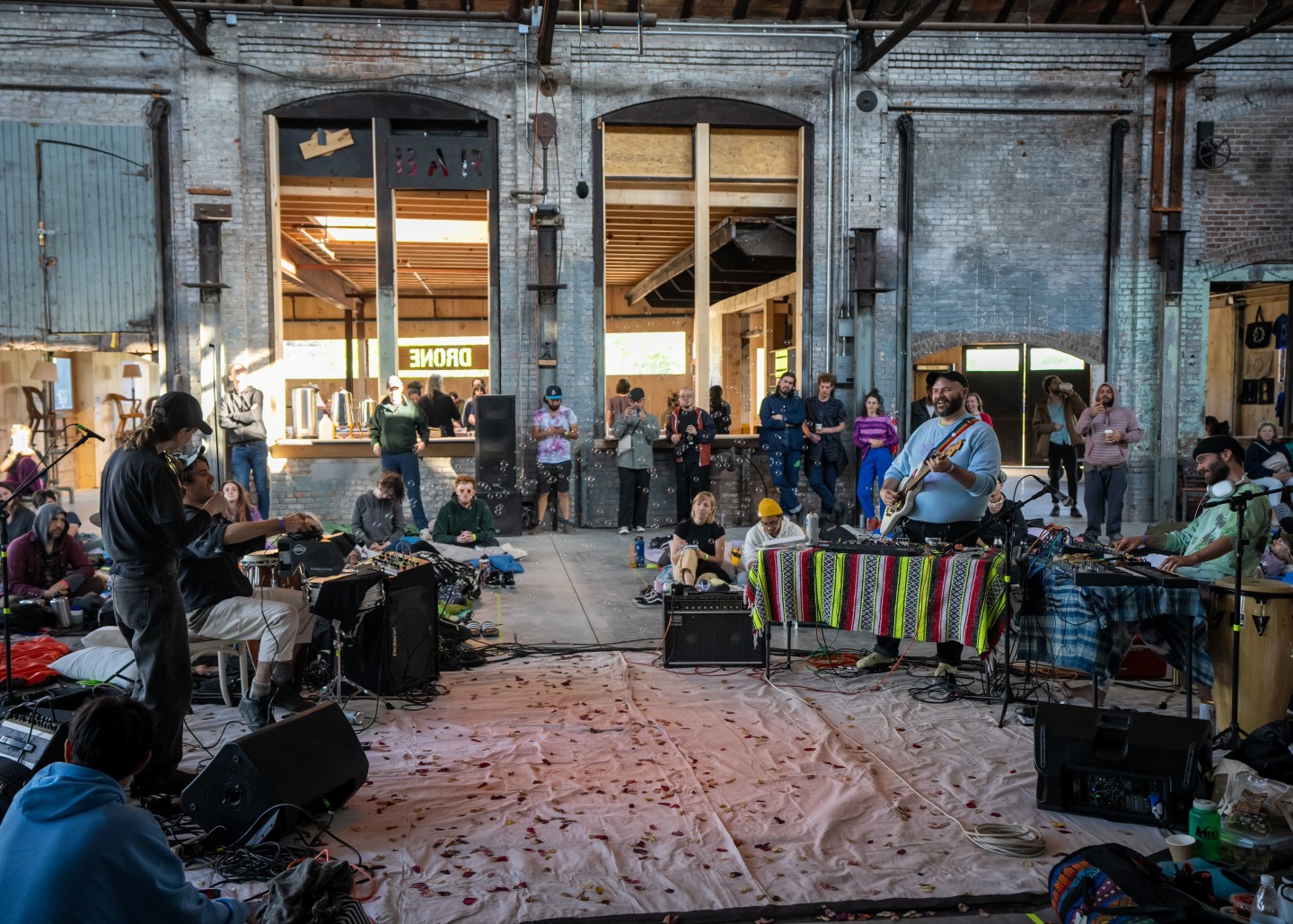 Evans Saxl Seretan Thayer Quartet. Photo by Peter Galgani.
Evans Saxl Seretan Thayer Quartet. Photo by Peter Galgani.
John Thayer
I’m attracted to drone music because it alters my body chemistry and helps me enter into a mental and physical state I believe is more in communion with the divine.
When I’m working on a piece of music and I feel like it’s developed the inertia to carry on without me, I know it’s in the right spot. I find the search for that zone highly addictive.
An event on the level of 24-HOUR DRONE is rare, as it requires commitment from both performer and audience; we’re all in it together. We have to collectively push through. The continuous tone and overlapping sets create a wonderful collaboration.
The sheer length of the event forces us to slow down and allows us to enter a more Alpha Wave state. We’re engaged in community but from a place of reverence and stillness. It’s a real joy to experience.
Ben Seretan
I’ve felt for a long time that the social conventions that exist around the live performance of music are really remarkably strict — we have all this very deeply ingrained, standardized behavior when attending concerts. There’s some variety from genre to genre, but typically there’s a stage, multiple sets, breaks, applause, encores, etc. It can all feel very routine! This sensation was really amplified when I worked as a sound tech and bartender at a DIY venue for a year: what, really, distinguished one performance from another?
This event is remarkable because of all the things it collapses: The stage itself is in the center of a room and at no elevation (the stage is literally just carpet padding covered in drop cloths, the most utilitarian version of a stage). The audience is at the same level as the performers and, because of the length, there’s this amazing democratization of attention — no one is expected to pay rapt attention the entire time, sleeping is encouraged, indeed a part of the performance. Clapping is earned or spontaneous, not expected, no encores, no 20-minute interval when everyone goes to the bar.
But then it also shows cooperation and good behavior on everybody’s part. By and large, people respectfully, considerately share the space. 500 people sleeping in a room! Where they have to maintain emergency exit egress! It’s really remarkable that it’s possible, and it really shows us how unimaginative we’ve become in how we present other forms of music.
There’s an intimacy with the performers, with the audience members, with the space at DRONE — you actually touch the building with your entire body when you sleep there, your face right up on the concrete. A wild calling in…
For me, drone music and drone phenomena (like refrigerators, aeolian harps, etc.) provide an uncanny, at times unsettling but at times very beautiful, illustration for the passing of time. It’s the sonic realization of the phenomenon of hurtling unceasingly through time, the bowing of the one cosmic string.
It’s very pleasant at any point to watch thoughtful music being actualized, but there’s something really profound and utterly ego-shattering about doing it for 15 hours straight. The bottom of the well, the dark night of the soul, the dawn before the light, etc. I’ve had this experience often in dance music contexts — somehow you’re always more tired and fucked up at 3 a.m. than you are at 9 a.m. — but that’s more of an athletic, runner’s-high kind of ecstasy. This event is more like excavating an underwater river and seeing it flow for the first time.
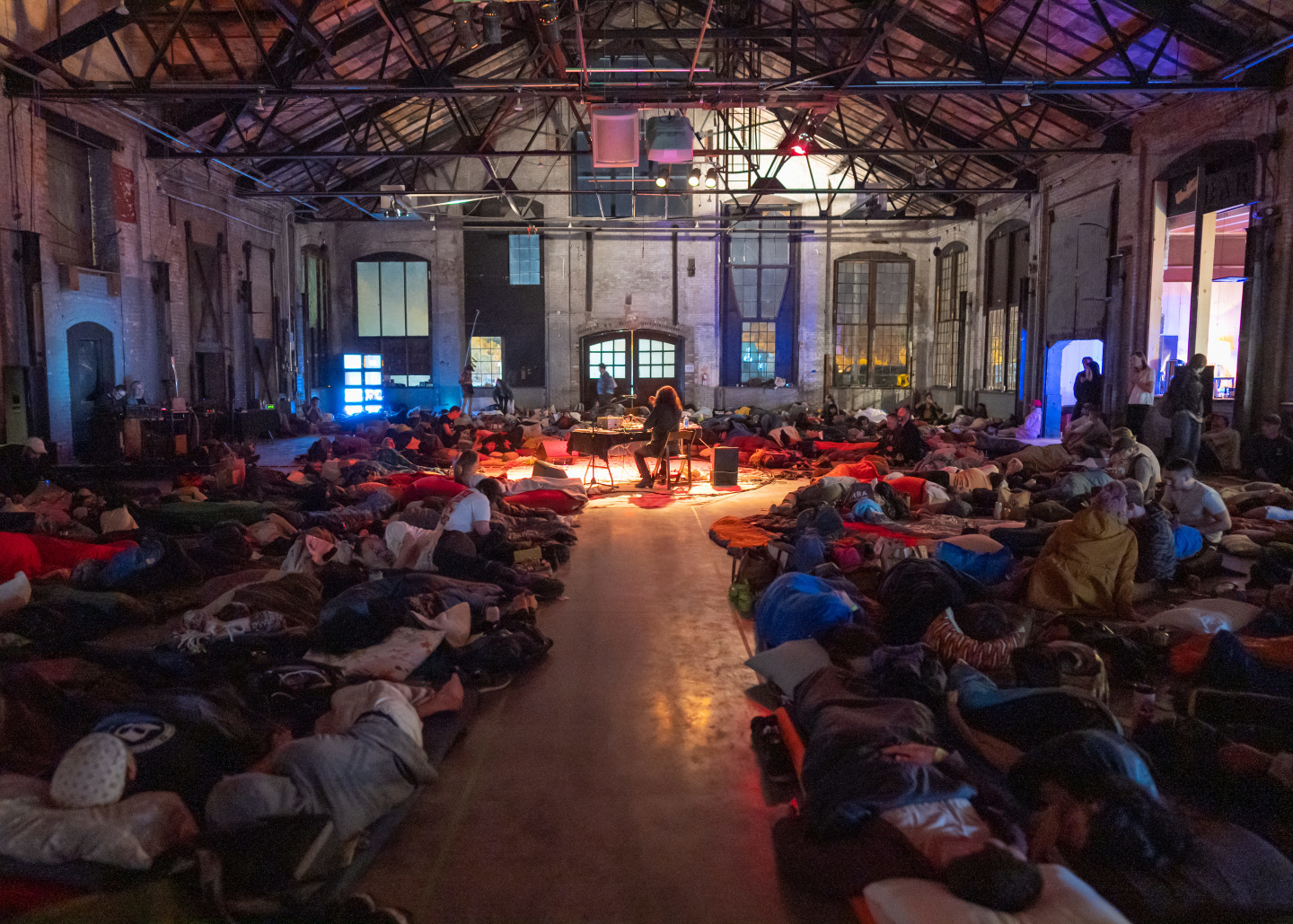 Raven Chacon. Photo by Peter Galgani.
Raven Chacon. Photo by Peter Galgani.
Raven Chacon
As musicians, our medium is time. Sometimes it is the only thing we are truly working with. Time, realized as music, shows us where we are in the long window of the universe. But to play or hear only long tones, or endless loops, reminds you that you have always existed.
